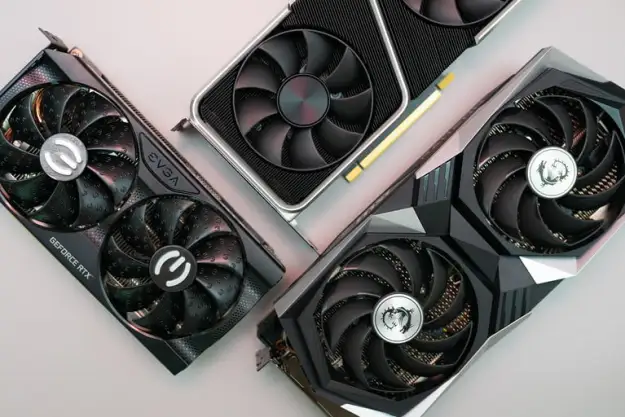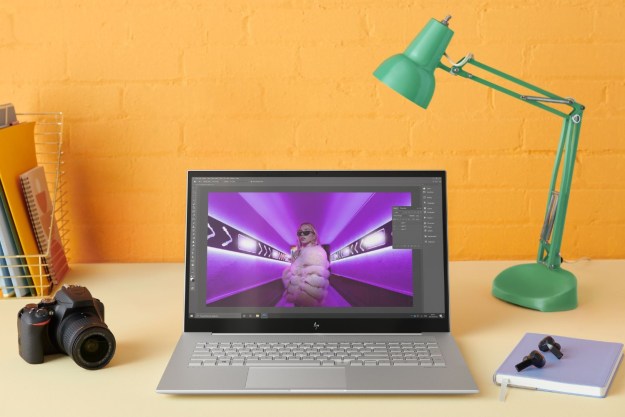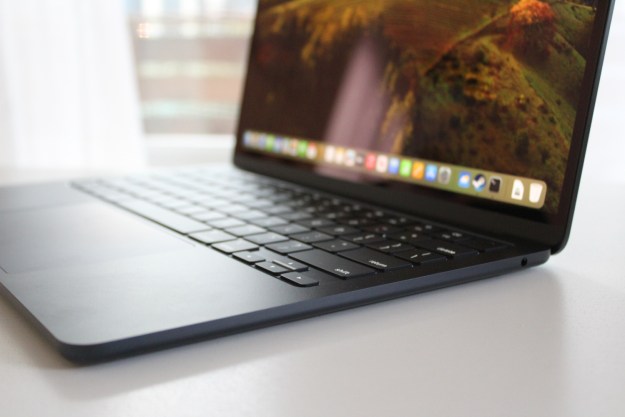“This flexible and attractive printer easily accommodates the needs of most home or small office users.”
- LCD screen for photo editing and controls
- computer not required for prints
- sytlish appearance
- Storage cards sometimes hard to remove
- "MyPrintMileage" service not available
Summary
At a reasonable price, the HP Photosmart 7760 truly offers high performance photo printing and is versatile enough to handle small office printing. This flexible and attractive printer easily accommodates the needs of most home or small office users whether it is high-quality color photo prints or speedy black and white documents.
The ability to use in standalone mode is a plus for those users that don’t own a computer or just wishing to print on the fly. Those looking for a standalone printer may want to consider the 7760 as HP has included everything the average user will need to edit, sort and print directly from their digital camera or memory card.
Overview
Hewlett Packard has delivered another excellent performer with the introduction of the Photosmart 7760. This home and small office printer can be used with a PC or Mac or as a standalone printer with the built in memory card reader and the 1.8-inch color LCD display.
The HP Photosmart 7760 is a thermal injet printer intended for printing black and white documents as well as high quality pictures. The unit features 16MB of internal memory and boasts up to 4800-optimized DPI in color prints and up to 1200-rendered DPI in black and white print.
The stylish HP Photosmart 7760 features a 1.8-inch LCD display.
Design and Features
The sleek design and nice use of color make the Photosmart 7760 and attractive display for the desktop. Of most interest is the control panel that contains multiple control buttons for use in standalone mode. These buttons give the user the ability to email, size, zoom, rotate and save their photos without the need for a computer. The adjustable 1.8-inch color LCD lets the user monitor the changes these buttons make and also offers instructions during calibration as well as providing printer status messages.
Paper trays on the Photosmart 7760 accommodate all the standard sizes up to 8.5×14 and will hold up to 100 sheets. A separate compartment to hold 4×6 paper is standard and the user can keep an eye on the 4×6 inventory via the viewing window.
Our only complaint in the design was with the cover for the memory card reader. The indentation along the front of the cover was narrow and shallow and just didn’t provide enough depth for us to slide a fingernail underneath to remove the cards. Although a minor issue, it could easily become an annoyance for those wishing to quickly swap memory cards.
Owners of certain HP cameras can take advantage of a second USB port, located in the front of the unit, which allows a direct connection from an HP digital camera to the printer.
Setup and Usage
The setup and install of the printer was straightforward and easy. Simply pop in the provided CD and follow the onscreen prompts, install the printer cartridges and paper and you’re done. HP has thoughtfully provided two black, color and photo cartridges and their installation is easy with the installation sticker that is affixed next to the cartridge bay.
One great feature is the built-in memory card reader, which supports CompactFlash, SmartMedia, Memory Stick, Secure Digital/Multi-Digital/Multi-Media, and xD-Picture Card. This flexibility ensures this printer can support most users.
The built-in 1.8 inch LCD is small but the display is bright and adjustable so that it may be laid flat or tilted towards the user for easier viewing. The LCD is primarily used in standalone mode to enable the user to view photos stored on memory cards and to view the results of editing, but it also provides feedback and status messages during normal usage with a PC.
Testing and Performance
Performance of the printer was on par with the current crop of home and small office printers and printed a variety of text documents from multiple applications (Microsoft Word, Excel, and Adobe Acrobat) with ease.
Getting the best print quality output may require the user to swap the black cartridge for the photo cartridge. While easy to do, it can become quite annoying for those users that often switch between text printing and graphics or photo printing. To somewhat ease the pain HP has provided a cartridge holder and docking space for the spare inside the cartridge bay. That annoyance aside, the text was crisp and black with no fading or jagged edges and the graphics have sharp color contrast and crisp lines and edges.
While the 7760 performed well with text printing it really shines when printing photos. Our testing of the printer focused on photo printing in standalone mode. Using the built-in memory card reader and our Sony 64MB Memory Stick we were able to easily scroll through all the pictures on the card.
The LCD screen, while small, was good enough for us to crop, zoom and rotate our pictures without the need for any intervention or enhancements from a computer. There are some enhancement features built in like brightness, contrast and the ability to add frames, color effects and a date/time stamp. We were also able to select print quality and number of copies through the menu interface. Photo editing software is much more powerful than what you can do on this LCD screen; the editing options on-board are fairly limited but they do work as intended.
HP’s documentation on the printer states that you can print a 4×6-inch photo “in as fast as 36 seconds.” Of all the printers we’ve tested, we’ve never been able to substantiate the speed claims of the manufacturer; perhaps they use a special test file that is known to produce fast results. In any event, the 7760 does print pretty fast.
We printed multiple pictures on 4×6 paper as well as 8×10 paper utilizing the “Best” printing mode and all copies were impressive as the colors very sharp and vivid with good contrast. The average print time on the 4×6 photos was 2 minutes 23 seconds and the 8×10 prints was an understandable 5 minutes 45 seconds.
Test scenario 1 was an 8 page MS Word Text document:
Draft – 8 Pages 91 Seconds
Normal – 8 Pages 1 Minute 57 Seconds
Best – 8 Pages 13 Minutes 10 Seconds
Test Scenario 2 was a 6 page MS PowerPoint graphics presentation:
Draft – 6 Pages 56 Seconds
Fast Normal – 6 Pages 2 Minutes 41 Seconds
Normal – 6 Pages 4 minutes 26 Seconds
While other HP printers we have tested include the “MyPrintMileage” feature that allows you to view and monitor the expected life of your print cartridges online, curiously, the 7760 does not support that feature. In our previous reviews, we applauded HP’s efforts with this feature. Unfortunately, it didn’t make the cut here.
The Photosmart 7760’s monitoring system makes us long for HP’s “MyPrintMileage” feature.
Conclusion
At a reasonable price, the HP Photosmart 7760 truly offers high performance photo printing and is versatile enough to handle small office printing. This flexible and attractive printer easily accommodates the needs of most home or small office users whether it is high-quality color photo prints or speedy black and white documents.
The ability to use in standalone mode is a plus for those users that don’t own a computer or just wishing to print on the fly.
Those looking for a standalone printer may want to consider the 7760 as HP has included everything the average user will need to edit, sort and print directly from their digital camera or memory card.
Editors' Recommendations
- The 10 best monitors for 2024: tested and reviewed
- HP launches a new gaming laptop and HyperX accessories
- Best 14-inch laptops for 2024: tested and reviewed
- Best color laser printers for 2024: tested and reviewed
- Best HP laptop deals: Get a 17-inch workhorse for $270 and more







